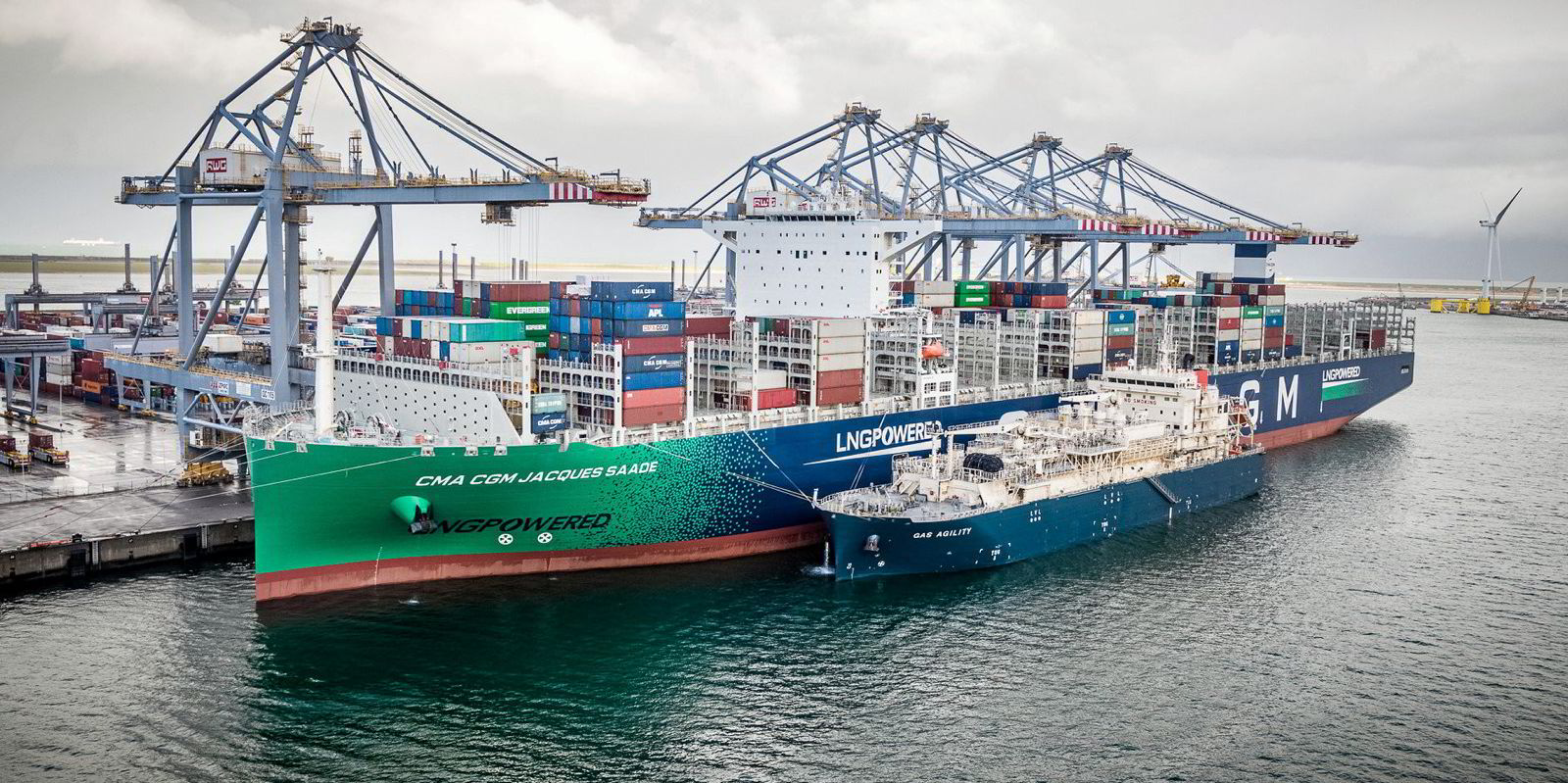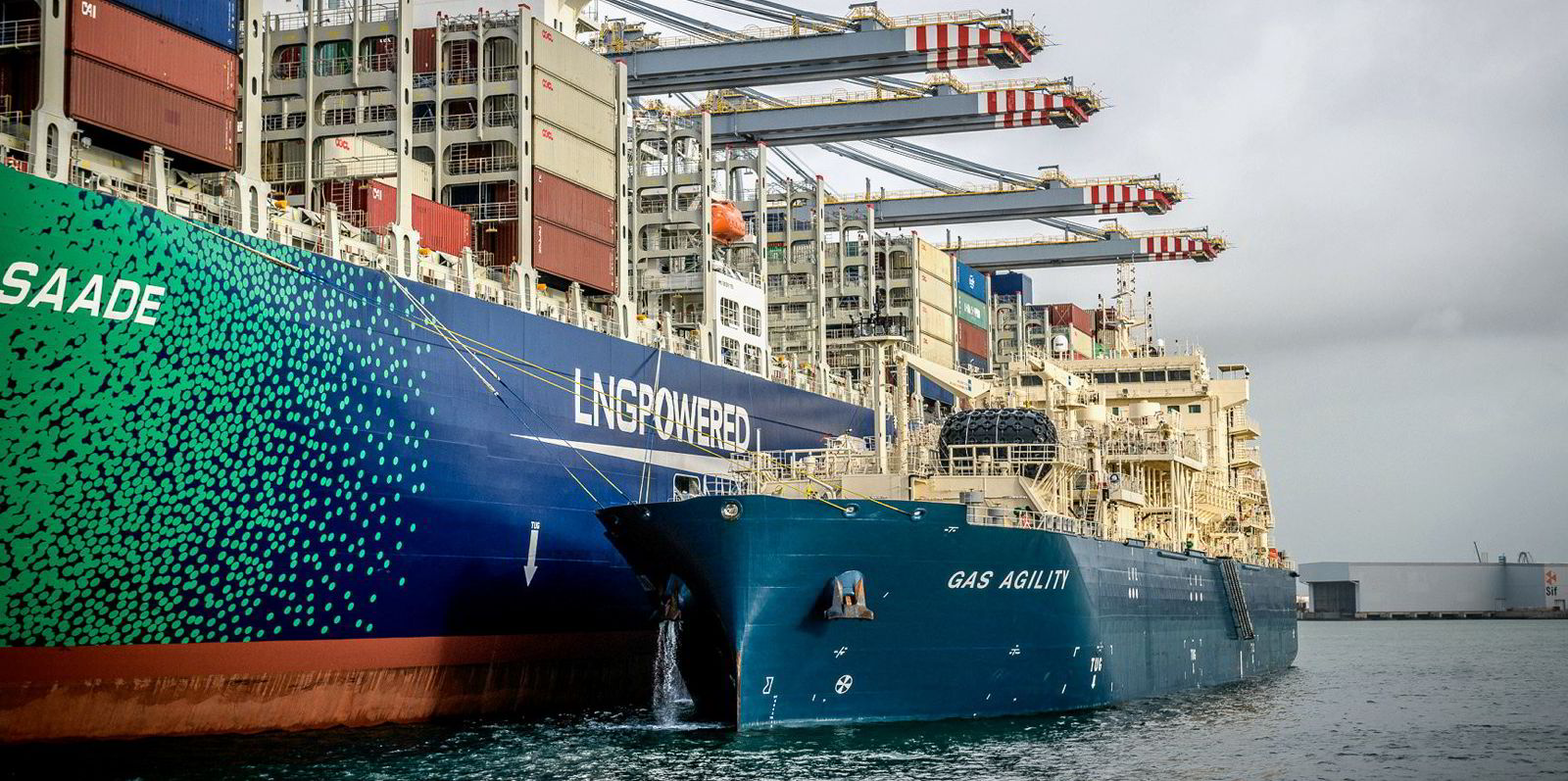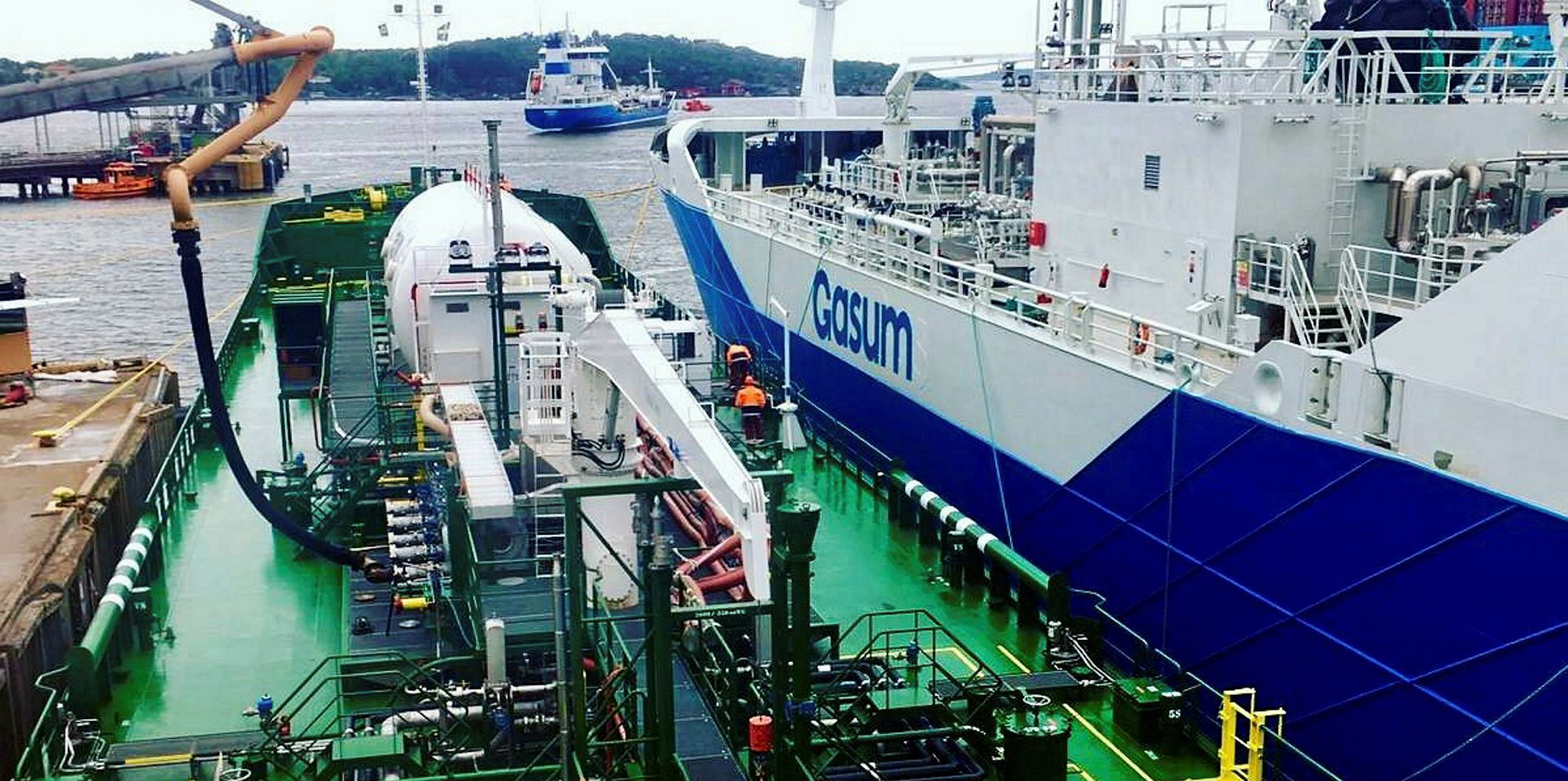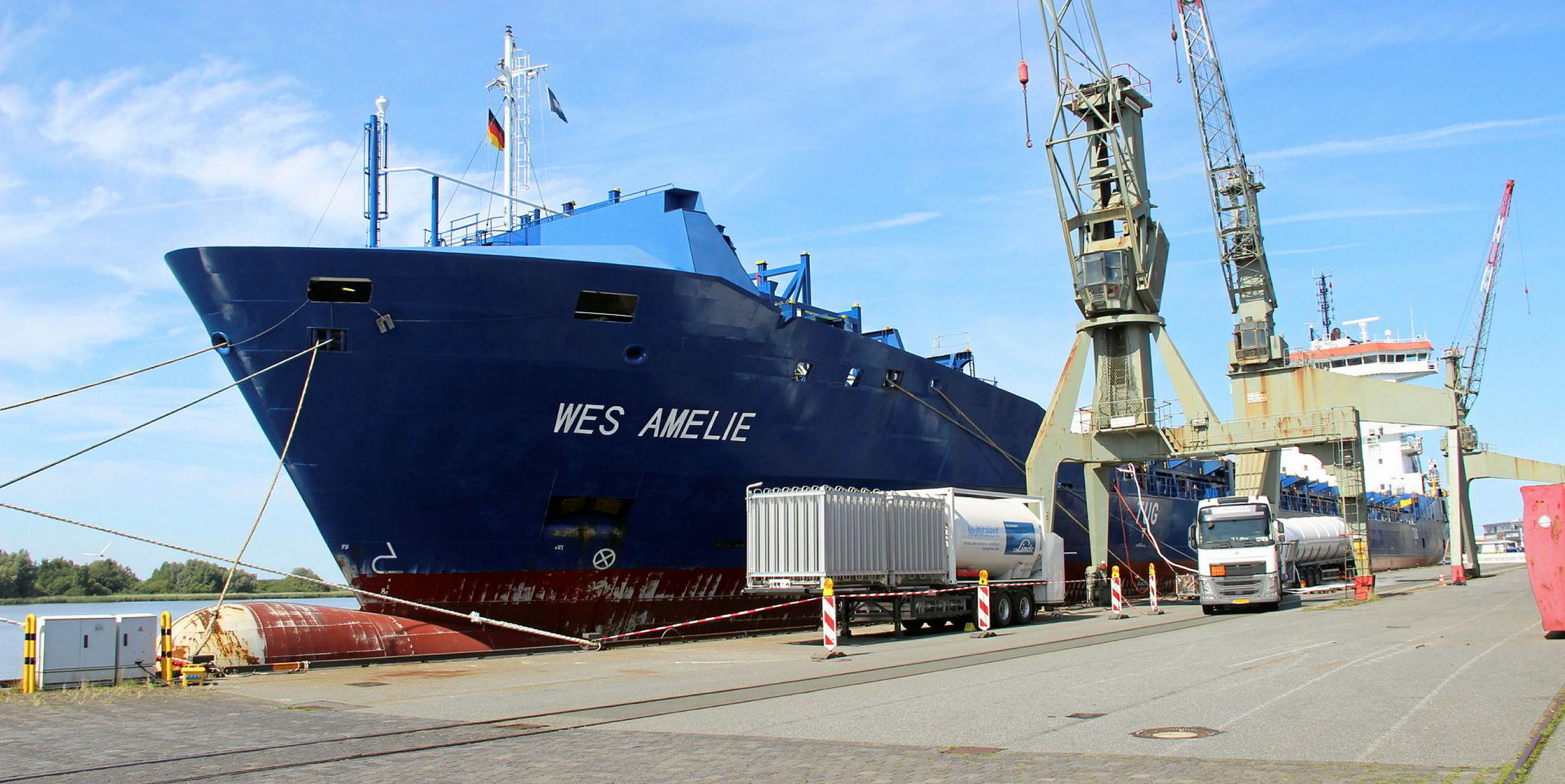Using bio-LNG as a drop-in fuel can cut emissions by up to about 92% in the combustion cycle compared to those of fossil fuel-based LNG, according to a new report.
Four industry groups looking at bio-LNG production and infrastructure for road and maritime transport said that higher emissions reductions will be possible if measured on a well-to-wake basis. They made the findings in a joint white paper entitled “Bio-LNG in Transport: Making climate neutrality a reality”.
The origin of the bio-LNG may offer further cuts, with that produced from domestic and agricultural waste having the potential for negative emissions.
For the paper, shipping industry coalition SEA-LNG teamed with the renewable gas advocate European Biogas Association, gas operator grouping Gas Infrastructure Europe (GIE) and the Natural & Bio Gas Vehicle Association (NGVA Europe), the European body promoting the use natural gas as a transport fuel.
The document, which looks at the potential for bio-LNG in both road and marine transport, has been produced in advance of the Smart Sustainable Mobility Strategy that is due to be published by the European Commission in December.
The groups said the production of bio-LNG is “ramping up quickly” in Europe.
They detailed that, whereas volumes this year are expected to amount to just over 100 tonnes per day (tpd), they will grow to slightly more than 500 tpd in 2021 and close to 1,000 tpd by 2023.
The groups called for more feedstocks that cannot be used for other purposes to be included in the European Renewable Energy Directive.
They recommended the creation of a single market for biomethane and bio-LNG by allowing for the trading of volumes and certificates across borders technical or political barriers.
They also want to see the bio dimension of LNG integrated into the revision in GHG reduction targets for shipping.
They said in the report that bio-LNG is a “very viable business case” for marine bunkering.
The paper described ship-to-ship bunkering as “upscaling dramatically”.
It detailed that in Europe by the end of this year there will be 14 LNG bunker vessels in operation, five of which are still to deliver, compared to just two in 2017. Worldwide, by mid-2020 there were 13 LNGBVs with another 28 on order or undergoing commissioning.
Snowballing
“The bunkering infrastructure to support LNG as a marine fuel continues to snowball,” the groups said in the paper.
Worldwide 118 ports have LNG bunkering facilities with 90 more developing them. In Europe there are 53 ports where LNG bunkering is available with facilities under development in a further 37.
The paper said the investment case for building vessels fuelled with LNG and bio-LNG is “robust”.
And it said the investment case for bio-LNG is identical to fossil LNG on capital expenditure.
In northwest Europe, a bio-LNG blend is currently commercially viable, the groups said. Here a 10% blend of bio-LNG with LNG is on par with 0.10% marine gasoil (MGO), in Rotterdam.
The groups cited SEA-LNG’s study commissioned from CE Delft that concluded bio-LNG is likely to be commercially competitive relative to other low- and zero-carbon fuels such as green hydrogen and ammonia.(Copyright)






